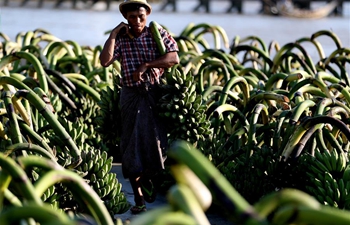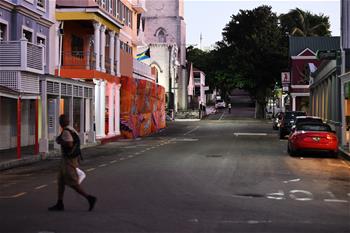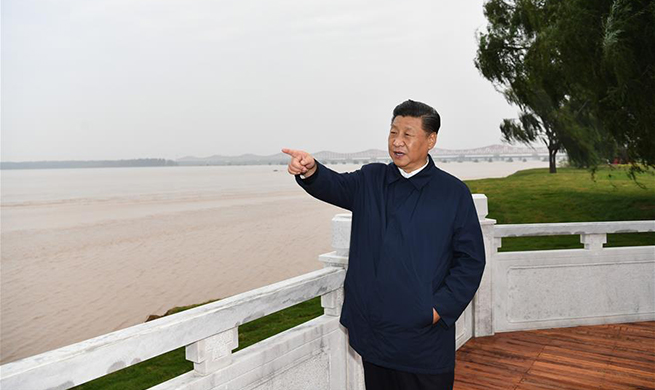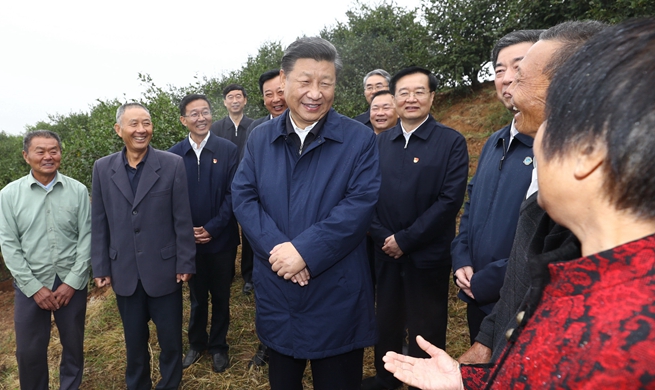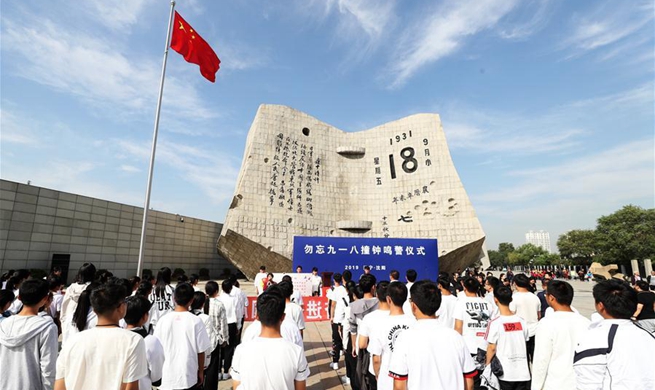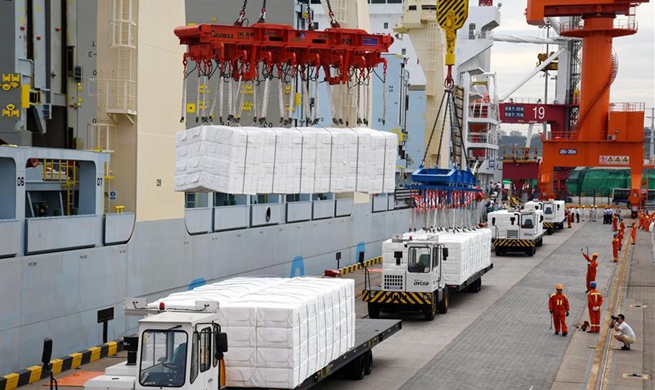By Tichaona Chifamba
HARARE, Sept. 18 (Xinhua) -- Zimbabweans continue to grapple with rising prices of basic commodities and other goods as the local currency, the Zimbabwe dollar (ZWL), continues to lose value against the U.S. dollar and inflation remains high.
Many producers and retailers continue to peg their prices against the U.S. dollar, which has seen prices of many goods and services continue to rise in tandem with the U.S. dollar to Zimbabwe dollar rate.
The interbank rate which put the Zimbabwe dollar at 8.8 against the U.S. dollar in mid-July has almost doubled and is now around 14.8 Zimbabwe dollars to the U.S. dollar.
The parallel market rate was between 16.40 and 16.60 to the U.S. dollar as at Sept. 17 amid fears that it would hit 17 before the end of the week.
Prices of many commodities have more than doubled in recent months, with the Reserve Bank of Zimbabwe (RBZ) saying that inflation remained the major challenge facing the economy.
According to the central bank, annual headline inflation accelerated from 56.9 percent in January to 175.5 percent in June.
The government has since suspended the publication of the annual inflation figures until February 2020 to avoid miscalculation of the country's inflation given the changes in functional currency from the U.S. dollar to the Zimbabwe dollar in June.
RBZ fears, however, that the annual inflation could breach the 200 percent mark before stabilizing towards the end of the year.
Month-on-month inflation declined to 21.04 percent in July from 32.96 percent in the previous month, and further declined to 18.04 percent in August.
"The inflation developments mainly reflected exchange rate adjustments, following a phased approach to currency reforms, which culminated in the simultaneous abolishment of the multicurrency regime and re-introduction of the Zimbabwe dollar, on 24 June 2019," said RBZ governor John Mangudya when he presented the Mid-Term Monetary Policy Statement last Friday.
Mangudya added that stability in the foreign exchange market, following the introduction of the local currency and successful fiscal consolidation efforts by the government, had laid a strong foundation for a disinflationary trend in the economy.
He said despite the elevated risks to inflation, emanating mainly from adverse inflation expectations and some lingering price distortions, which required fine tuning, the bank was fully committed to containing money supply growth, to ensure long-term price stability in the economy.
"Though inflation is likely to remain elevated in the near-term and even breach the 200 percent mark, we expect annual inflation to start declining from October 2019, and to moderate by the end of the year," he said.
Mangudya said the major outstanding challenge in winning the inflation battle was to ensure that funding for inescapable government expenditures, such as grain imports, fuel and summer cropping working capital requirements, were contained within budget, so as to minimize recourse to potential inflationary central bank financing.
